The Career Experience Continuum
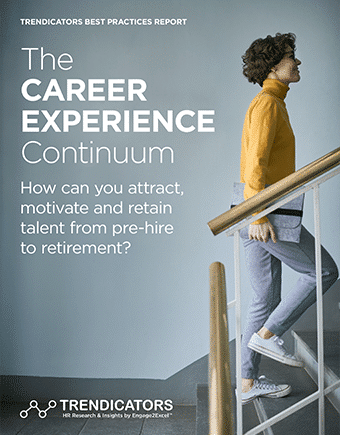
The average person changes jobs 10 to 15 times during his or her career.1
Every year, companies lose 25% of all new employees. 77% of that turnover could be prevented by employers.2
87% of employers say improving retention is a critical priority.3
This report presents a framework for improving motivation and loyalty through a better understanding of what employees really want.
SOURCES: 1. U.S. Bureau of Labor Statistics; 2. Work Institute 2018 Retention Report; 3. Survey by Kronos and Future Workplace
Download
 hbspt.cta.load(123973, '9d5a79e9-aff4-4a28-947a-3461a1530960', {});
hbspt.cta.load(123973, '9d5a79e9-aff4-4a28-947a-3461a1530960', {});
INTRODUCTION
Recently, much has been written about the need to improve employee experiences (EX). Many of the solutions offered under this umbrella include technologies that enable self-service, greater convenience and more personalized experiences at work. Programmatically, EX initiatives typically focus on making improvements in technical, cultural and physical environments within the workplace.
This report explores EX from a different vantage point—the perspective of individuals and what they really want from the work environment over the course of their journey with an employer. When these needs are not sufficiently met, motivation and productivity decline and employees seek career opportunities elsewhere.
The Career Experience Continuum presents a framework for improving motivation, commitment and retention throughout the talent lifecycle. Based on data from our national surveys and more than three decades of global research, this report offers a proven methodology for understanding and measuring what employees really want, along with practical ideas for focusing limited resources on influential points in the employee lifecycle to better attract, motivate and retain employees, from pre-hire to retirement.
The Career Experience is important to employees of all age groups:
The results below show the percentage of respondents, by age group, who agreed or strongly agreed with the statement:
“In life, I care about having a career:”
18-24: 85%
25-34: 91%
35-44: 84%
45-54: 82%
55+: 70%
SOURCE: Trendicators 2019 Job Seeker Survey Report by Engage2Excel
Trendicators is the research division of Engage2Excel, a leading provider of employee recognition, engagement surveys and talent acquisition solutions. Trendicators provides original research, along with reports on insights and best practices from industry leaders and experts.
Download
 hbspt.cta.load(123973, '9d5a79e9-aff4-4a28-947a-3461a1530960', {});
hbspt.cta.load(123973, '9d5a79e9-aff4-4a28-947a-3461a1530960', {});
The employee experience is influenced by three environmental factors
In the war for talent, many employers have stepped up initiatives to improve employee experiences (EX). Reflecting a shift from treating employees as assets to treating them more like customers, this trend is driven, in no small part, by the fact that employees have more choices today.
Jacob Morgan, the author of The Employee Experience Advantage, believes that EX is primarily influenced by the technology, cultural and physical environments in the workplace. The management consulting firm, McKinsey and Company, defines EX as “companies and their people working together to create personalized, authentic experiences that ignite passion and tap into purpose to strengthen individual, team and company performance.”
This holistic view of the workplace environment is focused on designing experiences from the perspective of the employee rather than forcing employees to fit into the organization.
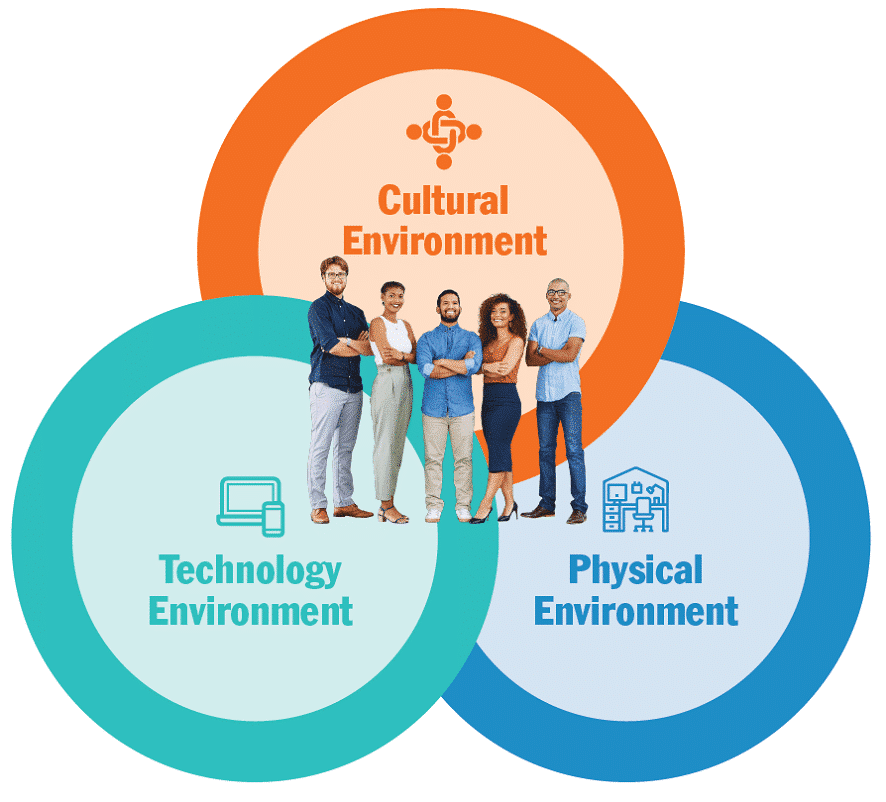
Download
 hbspt.cta.load(123973, '9d5a79e9-aff4-4a28-947a-3461a1530960', {});
hbspt.cta.load(123973, '9d5a79e9-aff4-4a28-947a-3461a1530960', {});
The Career Experience Continuum is influenced by individual needs and motivations over time
While programming to improve EX is vital in order to enhance the environmental factors that foster engagement, it is also critical to consider the individual needs and motivations of employees over the course of their journey with an employer.
In a 1943 paper called “A Theory of Human Motivation,” Abraham Maslow posited that motivation is the result of attempting to fulfill five basic needs: Physical, Safety, Social, Esteem and Self-Actualization. This laid the foundation for some of the work that has been done on the study of employee engagement over the past several decades.
The Career Experience Continuum considers the individual needs and motivations of employees—what employees really want—over the course of their tenure with an employer.
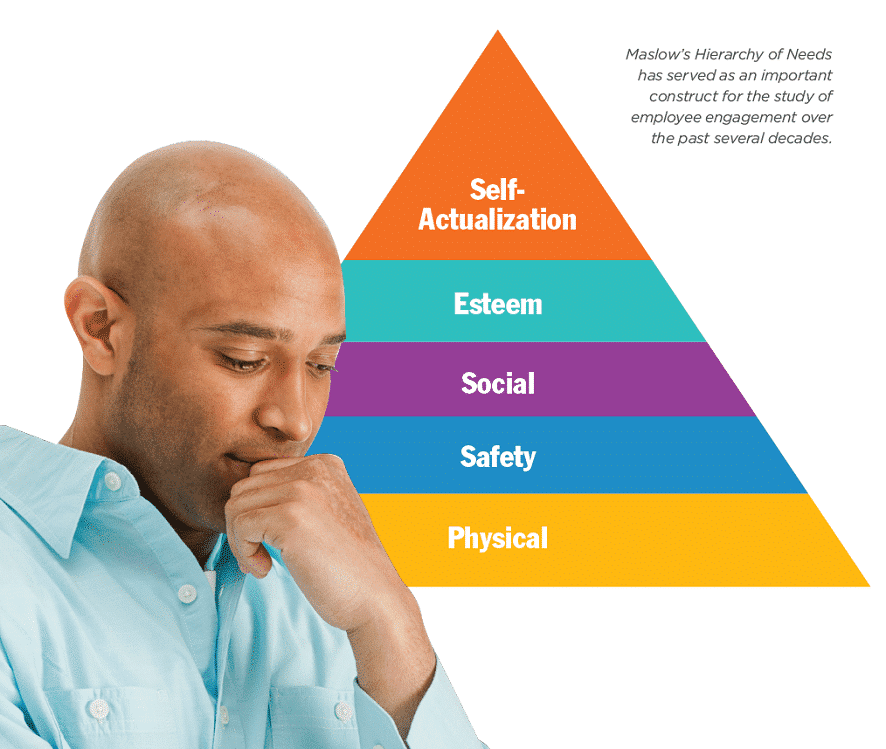
Download
 hbspt.cta.load(123973, '9d5a79e9-aff4-4a28-947a-3461a1530960', {});
hbspt.cta.load(123973, '9d5a79e9-aff4-4a28-947a-3461a1530960', {});
Career experiences influence motivation, commitment, engagement and—ultimately—whether an employee will seek employment elsewhere
Jack Wiley, Engage2Excel’s Chief Scientific Officer and internationally recognized author, has spent over three decades researching what employees most want, and which organizational factors best promote employee engagement, performance confidence and business success. Wiley defines employee engagement as the extent to which employees are motivated to contribute to organizational success and are willing to apply discretionary effort to accomplishing tasks important to achieving organizational goals.
In his book, RESPECT: Delivering Results by Giving Employees What They Really Want, Wiley defines seven dimensions for understanding what employees really want, which are represented in the questions below.
The answers to these questions, provided through engagement survey research, offer a rigorous, scientifically valid foundation for understanding and improving employee engagement and career experiences.

Download
 hbspt.cta.load(123973, '9d5a79e9-aff4-4a28-947a-3461a1530960', {});
hbspt.cta.load(123973, '9d5a79e9-aff4-4a28-947a-3461a1530960', {});
Using the RESPECT Framework to measure, influence and improve career experiences
HR organizations are challenged to demonstrate the impact of HR-related investments in programs for improving engagement and retention. Much of the current activity in EX investment focuses on making employee interactions more positive through pulse surveys, wellness programs, perks and self-service tools, to name a few. Although these tools provide useful inputs for improving employee experiences, they lack the rigor, scientific validity and benchmarking data of a formal employee engagement survey.
The RESPECT Framework, which stands for Recognition, Exciting Work, Security, Pay, Education & Career Growth, Conditions, and Truth helps employers understand what employees really want. Wiley’s RESPECT Framework includes scientifically valid survey tools that provide your leadership team with the statistically relevant insights they need to drive action plans and enact organization-wide change.
Based on more than three decades of research and surveys of millions of employees for leading global brands, the RESPECT survey system helps you understand survey results and put in place programs to improve the engagement levels and career experiences of employees.
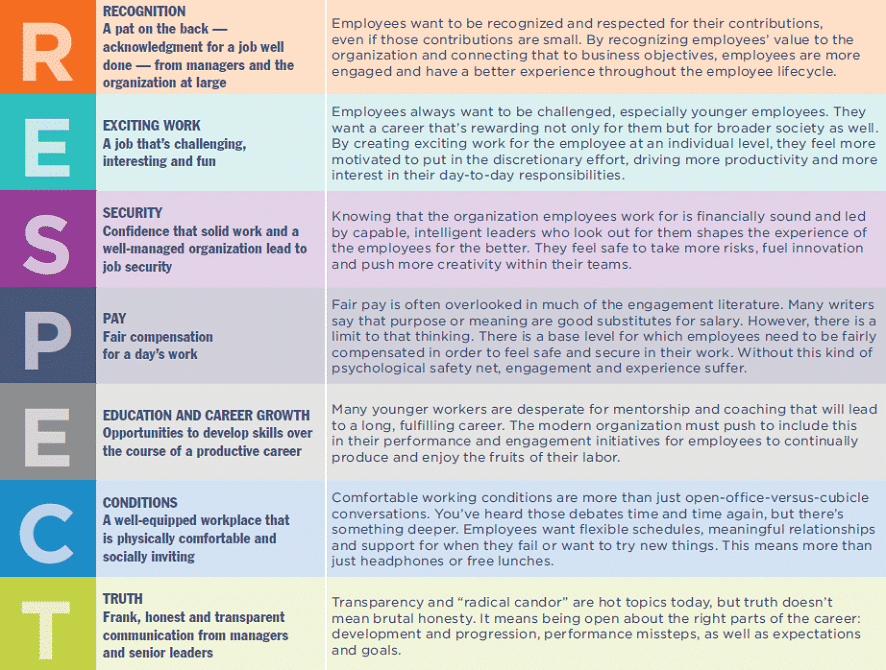
Download
 hbspt.cta.load(123973, '9d5a79e9-aff4-4a28-947a-3461a1530960', {});
hbspt.cta.load(123973, '9d5a79e9-aff4-4a28-947a-3461a1530960', {});
Understanding retention and separation influences across the employee lifecycle
Insights from the ongoing global research conducted to maintain the normative databases that support the RESPECT Framework provide employers with practical guidance for improving career experiences at influential points across the employee lifecycle.
The table below shows results from our surveys of employees across industry sectors and demographic groups. Organized according to three phases of the employee lifecycle, the survey results spotlight important retention and separation influences, as seen through the eyes of employees.
Recruitment: In today’s hyper-competitive market for talent, it is crucial for recruiters to keep candidates engaged. Our nationwide survey of job seekers shows that candidate engagement is most influenced by recruiters who are open and honest about the opportunity, who follow up as promised in a timely manner and who demonstrate a full understanding of the role. Training your recruiters to consistently demonstrate these behaviors will improve recruiting effectiveness and help get career experiences off to the right start.
Onboarding: Employees say that the quality of their onboarding experience has a significant influence on their intent to remain with an employer. In fact, 41% report that a poor onboarding experience would cause them to immediately start looking for another job. To improve onboarding experiences, make sure that you provide opportunities to interact with other employees and train managers to recognize the positive achievements of employees throughout the onboarding process.
Development: Nearly 90% of employees report that, in addition to career development opportunities, performance recognition programs increase their engagement, making them feel more valued.
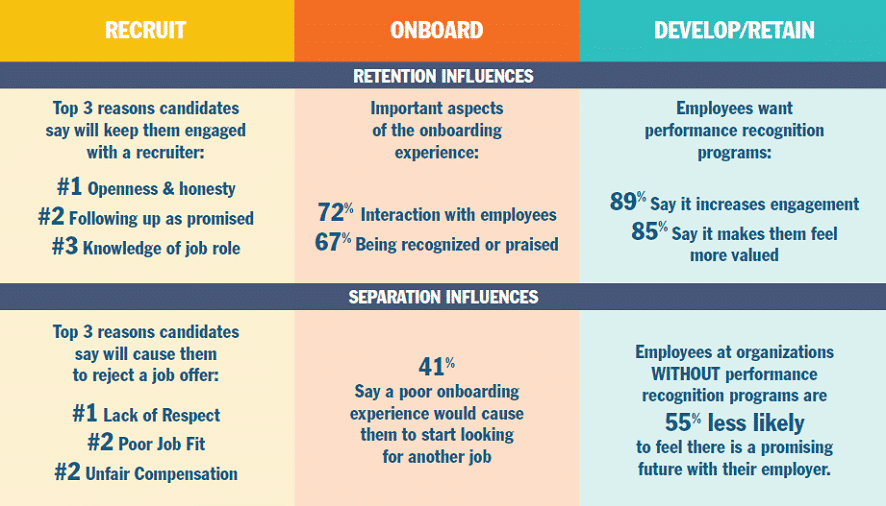
Download
 hbspt.cta.load(123973, '9d5a79e9-aff4-4a28-947a-3461a1530960', {});
hbspt.cta.load(123973, '9d5a79e9-aff4-4a28-947a-3461a1530960', {});
Six programmatic ideas for improving your organization’s Career Experience Continuum
In addition to the practical guidance provided on the previous page for addressing influential points, the table below offers programmatic ideas for creating more engaging and fulfilling career experiences.
An important takeaway from our research and the recommendations provided in this report is that career experience is more than career development. From the employee’s perspective, it is an important indicator of their fulfilment over the course of their journey.
When employers don’t provide the experiences employees want most, employees disengage, under-produce and seek employment elsewhere.
The Career Experience Continuum is important for employees of all ages; it represents a way to measure, influence and improve employee engagement over time, from pre-hire to retirement.
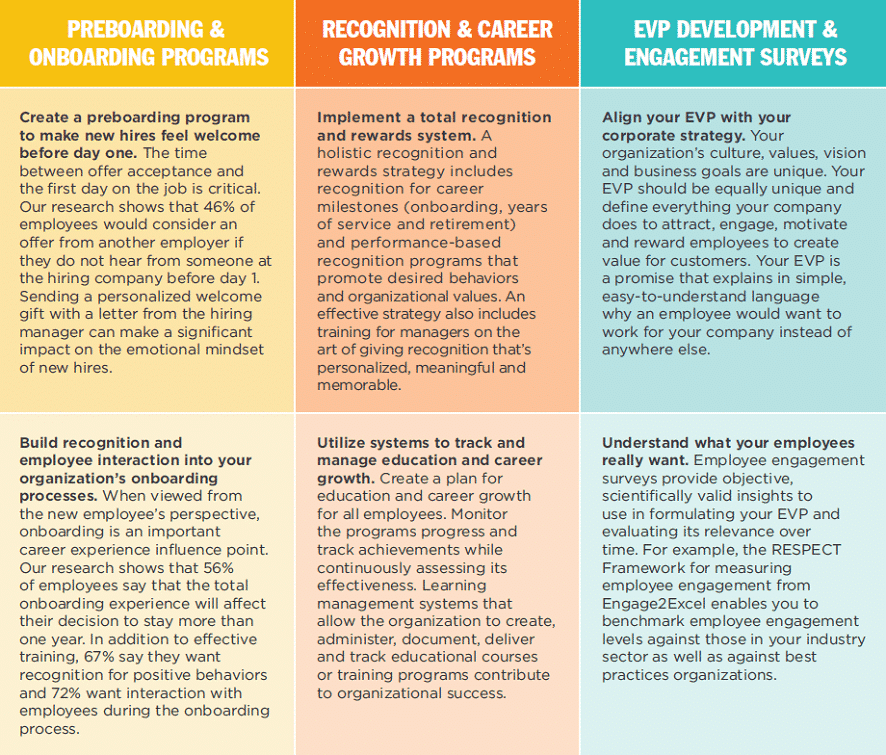
Download
 hbspt.cta.load(123973, '9d5a79e9-aff4-4a28-947a-3461a1530960', {});
hbspt.cta.load(123973, '9d5a79e9-aff4-4a28-947a-3461a1530960', {});